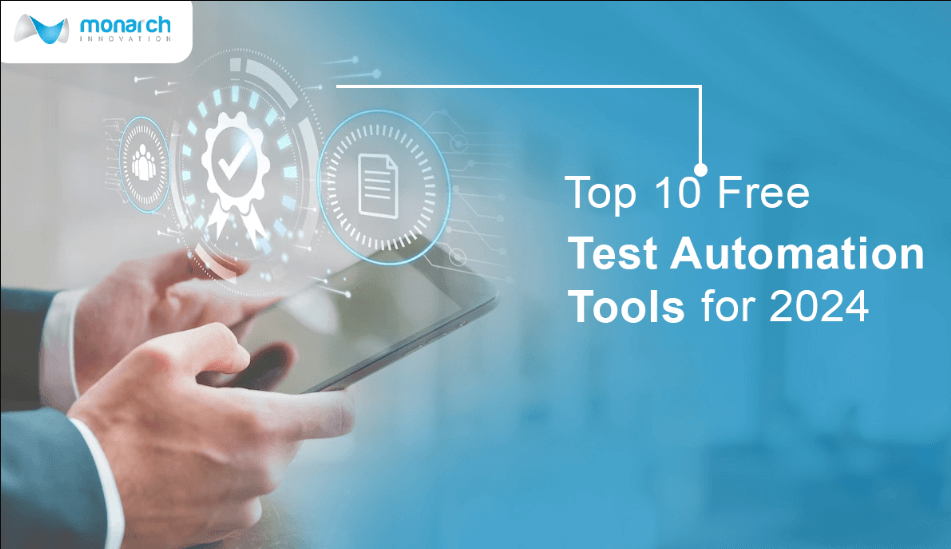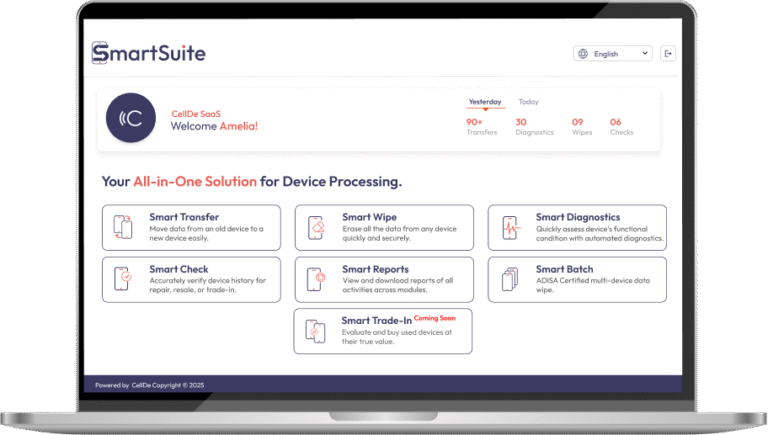Key Features to Look for in AI Test Tools
Software testing protects applications from execution errors, and AI test tools streamline this process by employing artificial intelligence to make them faster and more effective. Test tools automate cumbersome work, eliminate bugs early on, and optimize software quality without much effort. Selecting the optimal AI test tools can be challenging with the numerous types available, but it becomes easier when considering key characteristics.
This blog discusses must-have features to consider in AI test tools, described in plain technical terms so that testers, developers, and managers can understand. Knowing these features, you can choose tools that make testing easier and efficient.
Natural Language Test Creation
Users can create tests through natural language test creation, which enables non-coders to use plain English tests. Testers use natural language to describe test steps, which are then transformed into automated scripts through the tool’s conversion process. For example, you might write “check if the login button works,” and the tool creates a test automatically. This testing feature eliminates time constraints, allowing all team members to generate test data, even those without programming skills.
Software debugging tools promote team collaboration between programming specialists and non-programming team members during software development projects. Tools like KaneAI by LambdaTest excel in this area, using advanced language models to interpret instructions accurately. When evaluating AI test tools, ensure the natural language feature supports clear and flexible input for diverse test scenarios. This sets the stage for efficient test automation.
Self-healing Test Scripts
Self-healing test scripts are a must-have feature in AI test tools, as they automatically fix broken tests when applications change. When developers update an app’s interface, like moving a button, traditional tests often fail, requiring manual updates. Self-healing AI test tools use machine learning to detect these changes and adjust scripts, saving testers a significant amount of effort. For instance, if a button’s ID changes, the tool updates the test to find it correctly.
This feature reduces maintenance time, allowing testing teams to build new tests instead of spending time fixing existing ones. The utility of automation tests persists and becomes more reliable due to this feature as applications evolve and improve the overall value of automated testing. When choosing AI test tools, look for robust self-healing that handles complex UI changes effectively. This capability keeps your testing process smooth and efficient.
See also: 2025 Tech Trends That Will Shape the Next Decade
Intelligent Test Generation
Intelligent test generation is a powerful feature where AI test tools create test cases automatically based on application requirements. By analyzing code, user behavior, or high-level goals, these tools suggest tests for various scenarios, including edge cases humans might miss. For example, an AI test tool might generate tests for a checkout process, covering invalid inputs or network errors. The feature facilitates quick test development while ensuring complete test coverage.
The feature reduces manual workload, allowing testers to dedicate their time to essential, strategy-oriented tasks like result analysis and planning. Tools like Testim use machine learning to refine generated tests over time, improving accuracy. When selecting AI test tools, check if the generation feature supports the complexity of your app and integrates with your existing workflows. This leads to faster, more thorough testing.
Integration with CI/CD Pipelines
Automated testing through AI tools runs automatically during CI/CD pipeline processes to provide fleet response on code modifications. Jenkins and GitHub Actions, alongside other Continuous Integration and delivery test systems, automatically run checks after each update to detect bugs in an early stage of development. For instance, once a developer has committed code, the AI test tool executes tests and provides feedback within minutes. This maintains development cycles quickly and consistently.
Also, this feature brings testing in line with current DevOps practices so that automation is now at the center of the software delivery process. LambdaTest, for example, integrates well with CI/CD systems and provides extensive logs for rapid debugging. When choosing AI test tools, ensure they support your pipeline tools and provide clear integration guides. This streamlines your workflow and boosts team efficiency.
Advanced Analytics and Reporting
Advanced analytics and reporting in AI test tools provide clear insights into test results, helping teams improve software quality. These tools generate detailed reports that show which tests passed, failed, or found bugs, often with visual aids like graphs. For instance, a dashboard might highlight recurring issues in a payment module, guiding developers to focus their attention on the fixes. This makes debugging faster and more effective.
Moreover, analytics help prioritize testing efforts by identifying high-risk areas needing more coverage. Tools like Parasoft offer deep analytics to track test performance across projects. When selecting AI test tools, look for customizable reports and real-time insights that suit your team’s needs. This feature turns raw data into actionable steps for better testing.
Accessibility Testing Tools Integration
Accessibility testing tools integration ensures that AI testing tools check application usability for people with disabilities, such as users of screen readers. These tools are also used for verification against standards like WCAG, where applicability includes checking that text contrasts and keyboard navigation work properly. For example, an AI test tool might flag a button missing alt text, helping developers fix it early. This promotes inclusive software design.
Additionally, integrating accessibility testing tools saves time by combining accessibility checks with functional tests in one workflow. Tools like Axe DevTools can pair with AI test tools for seamless testing. When evaluating AI test tools, confirm they support accessibility standards and integrate with leading accessibility testing tools. This ensures your app reaches a wider audience.
Predictive Defect Analysis
Predictive defect analysis is an innovative feature where AI test tools use historical data to predict where bugs might appear. By analyzing past test results and code patterns, these tools highlight risky areas, like a frequently failing login module. For example, the tool might suggest extra tests for a new feature based on similar past issues. This helps teams focus testing efforts strategically.
Furthermore, this feature prevents defects from reaching production, saving time and costs on fixes. Testing tools like Test AI can enhance machine learning methods to create better predictions throughout their operational period. Select AI testing tools that feature straightforward predictive analysis methods compatible with your system complexity.
API Testing Support
API testing support in AI test tools allows testing of backend services that power applications, ensuring they work correctly. APIs handle critical tasks like data exchange, so tools must verify endpoints, responses, and error handling. For instance, an AI test tool might test if a payment API returns the correct status code under heavy load. This ensures robust backend performance.
Moreover, API testing complements UI tests, providing complete coverage of an app’s functionality from front to back. Tools like KaneAI let you add API tests to existing workflows, streamlining the process. When selecting AI test tools, check if they support REST, GraphQL, and other API types with easy setup. This creates a complete testing strategy.
Test Management and Organization
Test management and organization features in AI test tools help teams plan, track, and maintain test cases efficiently. These tools offer dashboards that group tests by feature, such as user authentication, and monitor their status. For example, you can see which tests are ready, running, or need updates at a glance. This keeps testing organized, especially for large projects.
Additionally, these features support collaboration by allowing teams to assign tasks and share results easily. Tools such as PractiTest offer centralized platforms for managing all test assets. When assessing AI test tools, ensure they include flexible organization features and can integrate with project management tools, such as Jira. This streamlines workflows and increases team productivity.
Debugging Support
Debugging support in AI test tools helps teams quickly find and fix issues when tests fail, saving valuable time. These tools provide detailed logs, screenshots, or videos that show exactly where a test broke, such as a form not submitting. For instance, KaneAI’s GenAI debugging suggests fixes based on error patterns, speeding up resolution. This makes troubleshooting less stressful and more efficient.
Furthermore, good debugging support reduces guesswork by pinpointing root causes, even in complex apps. When choosing AI test tools, look for features like error categorization and step-by-step failure reproduction. This ensures teams can address bugs confidently and maintain high-quality software.
Scalability and Performance
Scalability and performance features ensure AI test tools handle large test suites and complex apps without slowing down. As projects grow, tools must run thousands of tests across devices and browsers efficiently. For example, a tool like HyperExecute can execute tests 70% faster than traditional clouds, supporting massive scale. This keeps testing fast, even for enterprise applications.
Moreover, high performance reduces wait times, letting teams meet tight deadlines. When evaluating AI test tools, check if they support parallel testing and cloud-based execution for speed. This ensures your testing keeps pace with development, delivering reliable results consistently.
LambdaTest: Your Easy Path to Smart AI Testing
LambdaTest is a top AI test tool that helps teams create high-quality software with simple, smart automation and cloud testing. Its primary tool, KaneAI, is the first complete AI testing agent, using advanced tech to make tests easy. With KaneAI, you can write tests in plain English, so even non-coders can use AI test tools to create scripts for web, mobile, and API tests. This saves time and makes testing smooth.
LambdaTest’s HyperExecute runs tests super fast, up to 70% quicker than other clouds, across over 5000 browsers and devices. Its tests fix themselves when app designs change, so you spend less time updating them. It also checks if the app visuals look perfect. LambdaTest works with tools like Jenkins and Jira, fitting into your coding process. Plus, the platform supports disability testing instruments that help developers verify universal app functionality by following Web Content Accessibility Guidelines (WCAG).
LambdaTest provides clear reports and AI tips to help you spot test issues and fix bugs quickly, allowing you to launch apps sooner. Over 2 million users, including big names like Microsoft and Nvidia, trust LambdaTest for its ease and speed. Whether testing websites, mobile apps, or visuals, this AI test tool makes testing better.
Conclusion
AI test tools revolutionize software testing with features like natural language test creation, self-healing scripts, and intelligent test generation. Cross-platform support, CI/CD integration, and accessibility testing tools ensure comprehensive, inclusive testing, while analytics, debugging, and security features enhance reliability.
Scalability, API testing, and strong community support make these tools robust for any project. Evaluate AI test tools based on these features to boost efficiency and quality. What features will you prioritize to transform your testing? Start exploring AI test tools today and share your insights to inspire others.






